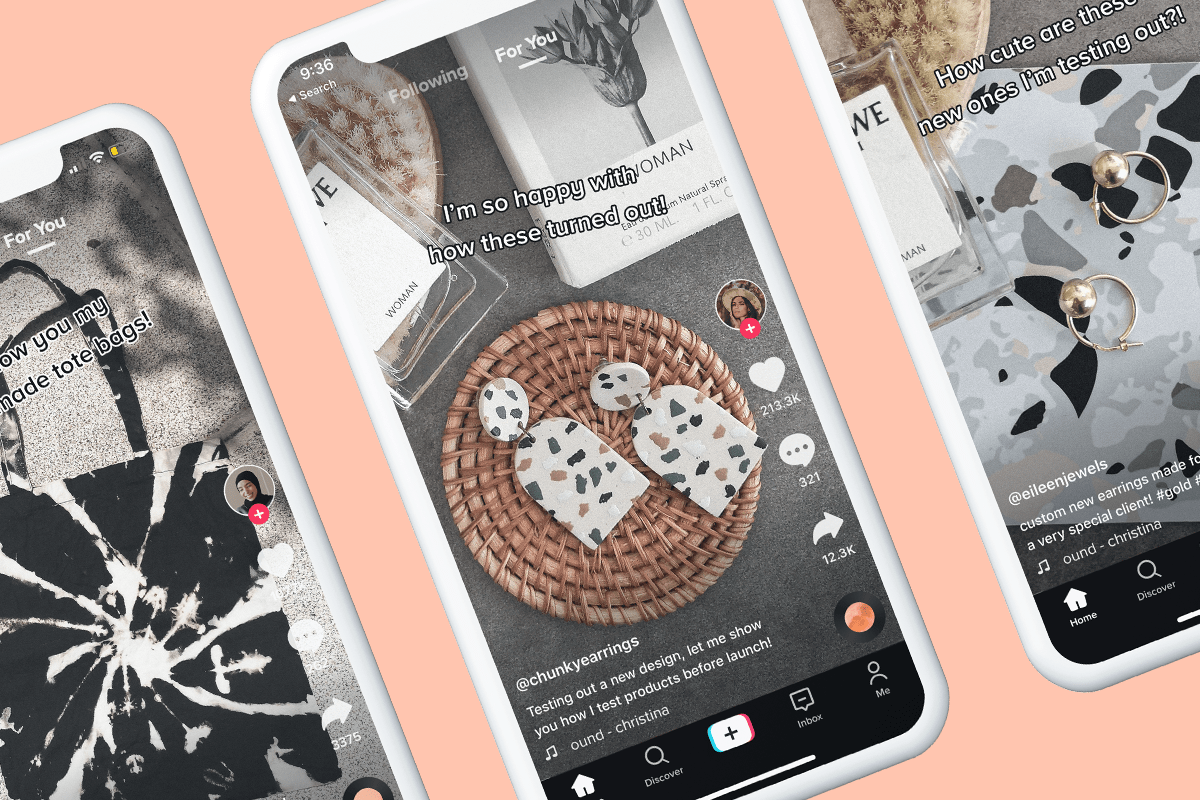Imagine walking into a store and being greeted by a salesperson who immediately tries to sell you on a product—without even asking about your needs. Off-putting, right? Yet, many businesses do this with email marketing—blasting new subscribers with their next promo before building a relationship.
Savvy marketers take a different approach. Instead of bombarding new leads with promotional emails, they use lead nurturing emails to usher them throughout the buying journey with relevant content that builds trust and gently guides potential customers to buy a product or service.
Ready to level up your email marketing? Dive into essential strategies and best practices for creating lead nurturing emails that convert. These insights will elevate your email nurture campaigns, whether you’re just starting or fine-tuning your existing approach.
Contents
What is a lead nurturing email?
A lead nurturing email is a targeted, personalized message designed to guide potential customers through the sales funnel and to your brand’s desired action—like a purchase or appointment booking. They do this by providing valuable information, building trust, and encouraging engagement with your brand.
Unlike general marketing emails focusing on promotions or announcements, lead nurturing emails are strategically crafted to address your leads’ specific needs, interests, and pain points at various stages of the buyer journey. They’re also usually triggered to send based on actions taken by your prospect.
📫 Get everything you need for great emails >> The Complete Email Marketing Toolkit: Free Email Templates, Subject Lines & Tips
How email nurture campaigns work
Lead nurturing emails are also often sent in a sequence.
A lead nurture sequence is a series of interconnected emails designed to build a relationship with a lead over time. This sequence typically consists of multiple emails sent at strategic intervals, each with a specific purpose in guiding the lead toward your desired action.
Here’s how a lead nurture campaign sequence typically works:
- Trigger: Your prospective customer takes a specific action, such as signing up for your email newsletter or leaving your website without purchasing.
- Segmentation: Email subscribers are categorized based on their characteristics, behaviors, or interests. These segments can then be used to deliver relevant content.
- Automated delivery: Emails are sent automatically at predetermined intervals or in response to specific actions taken by the lead.
- Progressive engagement: Each email in the sequence builds upon the previous one, providing relevant information to move the lead closer to conversion if the last email didn’t result in conversion.
- Conversion opportunities: Every email includes a call to action (CTA) to take the desired action, whether making a purchase, downloading an app, starting a trial, or booking an appointment.
- Ongoing nurturing: Even after a conversion, you can continue nurturing customers to encourage them to return for another purchase.

Benefits of lead nurturing emails
Lead nurturing emails replace the “spray and pray” approach with personalized, relevant content that resonates with subscribers based on their interests and stage in the buying process. This approach:
- Positions your brand as a helpful resource, building trust and credibility.
- Qualifies leads so you can focus your efforts on your target audience.
- Shortens the sales cycle by addressing hesitations and providing timely information.
Well-crafted lead nurture sequences increase the likelihood of conversion and help build lasting customer relationships, fostering loyalty and encouraging repeat business.
🛑 Get the guide >> How to Make Great Landing Pages (with Crazy High Conversions)
Best practices for crafting high-performing lead nurturing emails
Creating effective lead nurturing emails is both an art and a science. Implement these best practices to develop lead nurture emails that build meaningful relationships with your prospects, ultimately leading to more conversions.
Segment your audience
One of the most powerful ways to improve the effectiveness of your lead-nurturing emails is through audience segmentation. By dividing your email list up based on specific criteria, your emails can be more relevant and personalized content for each subscriber.
Here are a few ways you can try segmenting your audience:
- Demographics: Group subscribers based on characteristics like age, gender, location, or job title. These will be most effective if relevant to how different demographics interact with your business. For example, a gym could segment its mailing list by various age groups to promote tailored fitness programs—like high-intensity workouts for younger adults and low-impact classes for seniors.
- Behavior: Segment based on actions taken on your website, such as pages viewed, services and products browsed, or abandoned carts. This allows you to target leads based on the interests or intentions they’ve demonstrated through their interaction with your business. For instance, a bookstore could segment subscribers based on events they’ve booked attendance for and then send emails with relevant books to buy.
- Purchase history: Categorize customers based on specific products or services they’ve bought or buying frequency. Then you can offer similar products and services in the future. For example, a hair salon could send targeted emails to clients who regularly book coloring services about new hair color trends to inspire their next visit. Or they can send clients a reminder to schedule their next appointment around when they usually book one.
- Interests or preferences: Use data from surveys, quizzes, or signup forms to group subscribers based on their interests or needs. Then, you can send targeted content based on what they care about most. For example, a nutritionist can ask new email subscribers about their dietary goals (e.g., weight management, food allergies, sports nutrition, etc.). Then, they can send relevant content—like how to discover food allergies—that might ultimately lead potential customers to book a nutrition session.
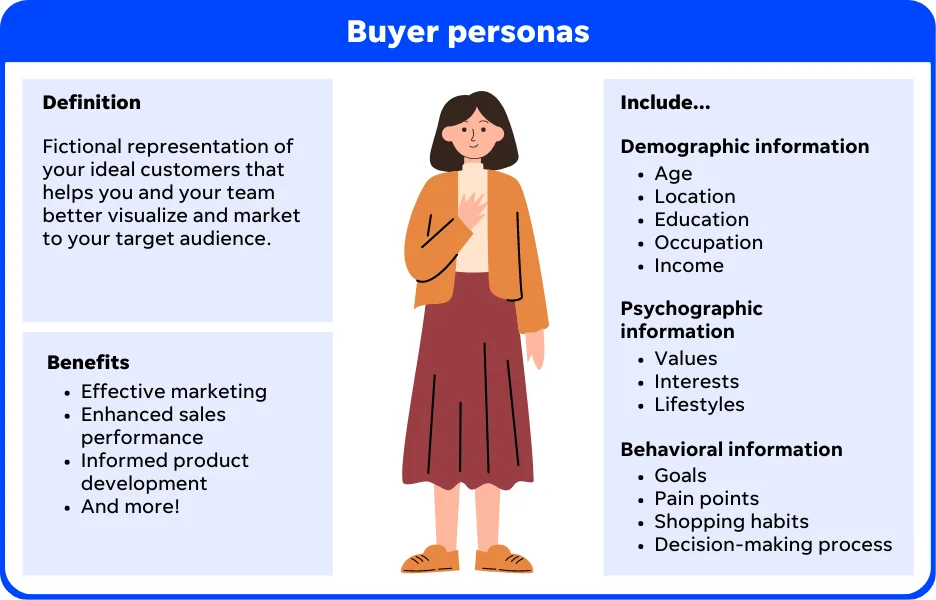

Creating buyer personas can also help you segment your nurture campaigns.
Continue refining your email list segmentation as you learn more about your customers to increase the likelihood of engagement and conversion.
🕵️♀️ Want to understand who you should be targeting with your marketing? Download the guide >> How to Find Your Target Audience [Simple Steps!]
Automate emails based on audience behavior
According to Klaviyo, automated email flows generate up to 30X more revenue per recipient than one-time email marketing campaigns.
Automating your lead nurturing strategy allows you to send timely, relevant emails based on your subscribers’ specific actions. This approach ensures your leads receive the right message at the right time, increasing the chances of engagement and conversion.


Source
For example, sending a welcome email after a lead subscribes can help encourage their first purchase. Cart abandonment emails can remind online shoppers what they are interested in. Follow-up emails after a customer’s purchase can help familiarize them with their new product so they fall in love with it and are more likely to become loyal customers who come back for more.
For example, a bakery could set up an automated email series for customers who sign up for their cake decorating class. Before the class, the bakery can send a confirmation email and a reminder a few days before the class with what to expect to ramp up excitement. After the class, they can send a follow-up email with at-home decorating tips based on what they learned and information about another relevant class to sign up for.
Craft compelling emails
Creating compelling lead-nurturing emails is crucial for engaging your audience and moving them toward conversion.
Consider these key elements when creating your emails:
- Design and layout: Create visually appealing emails that are easy to read and navigate. Use a clean, mobile-responsive design with a clear hierarchy of information.
- Email copy: Write concise, engaging copy that speaks directly to your audience’s needs and interests. Use a conversational tone that feels appropriate for your brand and focus on the benefits to the reader.
- Clickable subject lines: Craft attention-grabbing subject lines that make recipients want to open your emails. Keep them short, clear, and relevant to the email content. Avoid clickbait—not meeting a lead’s expectations could annoy them and harm your relationship.
- Personalization: Go beyond using the recipient’s name. Personalize content based on their preferences, behavior, or purchase history to make your emails more relevant.


- CTA: Include a single, clear CTA in each email to guide recipients toward the desired action. Giving them too many choices could result in no action at all.
- Provide value, don’t just promote: Focus on delivering valuable content that helps your audience solve problems or learn something new. This builds trust and positions your brand as a valuable resource, not just a seller. Just keep it relevant to your business.
If you remember one thing, it’s this: Create emails your subscribers would look forward to receiving, not just more promotional messages in their inbox.
Measure and optimize every element of your email nurture campaigns
To maximize the performance of your lead nurturing emails, you’ll want to continuously measure their performance and optimize based on the data you collect.
Start by tracking key email marketing metrics:
- Engagement metrics: Monitor open rates, click-through rates, and unsubscribe rates to gauge how well your emails resonate with your audience.
- Conversion metrics: Track actions taken after a subscriber clicks on your link, such as purchases made or appointments booked, to determine how effective your emails are at reaching your goals.
Look for patterns in what types of emails, subject lines, or content perform best. In your email sequences, identify any drop-off points where engagement decreases to determine if you need to update a specific email to make it more engaging or shorten the overall sequence.
Remember that conversion rate is arguably the most important metric to optimize for. A high open rate doesn’t mean much if it doesn’t translate into purchases.
Hypothesize what might improve performance in your emails, then run A/B tests to experiment with each element one at a time to see what works best.
Test elements like:
- Copy variations
- Imagery
- Email layout
- Subject line alternatives
- Different offers or incentives
- CTA placement or wording
- Sending times
- Number of emails in a sequence
Optimization will be an ongoing process. What works today may not work as well tomorrow, so keep testing and refining to stay ahead of changing customer preferences and behaviors.
5 types of lead nurturing emails (with templates and examples)
To understand what’s possible, explore these five lead-nurturing emails to use in your marketing. Each type uniquely guides potential leads through your funnel, builds stronger relationships, and drives more conversions.
1. Welcome emails
Welcome emails are often the first way a lead will interact with your brand after subscribing. They set the tone for your relationship with new leads and can significantly impact future engagement.
Here’s a basic template for a welcome series you can try.
Thank you email with incentive
Express gratitude for subscribing and give them their incentive (like a discount code) if you offered one when you got their email address.
For example, Worth the Journey is a small business digital marketing agency that offers a “business growth guide” as an incentive when a lead signs up for their email list.


So the first email a subscriber receives includes the guide—but also a CTA to schedule a business coaching strategy session:
This fulfills the promise made during signup and seamlessly guides subscribers to further engagement with the agency.
Brand story email
Introduce new leads to your company’s history, values, or mission to help them connect with your brand on a deeper level.
Retreat center Kripalu describes their approach to yoga and illustrates their values of compassion, belonging, and hope:


Education on product or industry
Provide valuable information related to your products and services or niche. This builds trust and shows off your expertise.
Buoy is a clean electrolyte drink enhancer. In their welcome email series, they share what sets their product apart:


And at the end of the email, they remind subscribers about their signup incentive:


Social proof
Share customer testimonials or reviews to build trust and credibility.
Skincare brand Dear Brightly includes several positive reviews in one email in their welcome series:
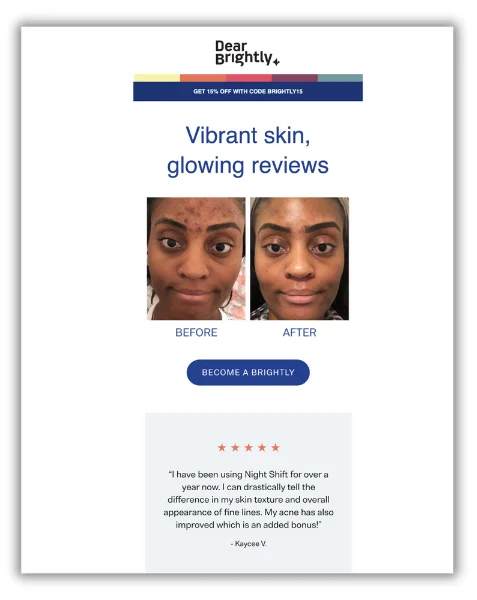

The added images showcase the effectiveness of their products.
Incentive reminders
It’s easy for leads to get distracted and forget about the incentive they have. So, gently remind subscribers about any time-sensitive offers or discounts they received when signing up.
Dental care brand Bite reminds subscribers that their discount is about to expire:


The brand also includes a handy button to shop that emphasizes the incentive.
These are just a few ways to use welcome emails to build connections with leads while providing value. Experiment with different tactics to find what works for your business.
2. Abandonment email flows
Abandonment emails are triggered when potential buyers show interest in your products or services but don’t complete a desired action. These emails aim to re-engage leads and encourage them to return to your site.
There are two main types of abandonment emails:
Browse abandonment emails
Browse abandonment emails are sent when visitors view specific pages on your website but leave without adding anything to their cart, booking an appointment, etc. Browse abandonment emails remind leads about their interest and can provide additional information or incentives to encourage a conversion.
For example, if a client viewed the services page at an auto repair shop without booking an appointment, the shop could email more information about that service and a CTA to schedule.
Activewear brand Girlfriend Collective sends a quick email with the product a shopper showed interest in and a button to shop:


Cart abandonment emails
Abandoned cart emails are triggered when customers add items to their cart but don’t end up completing the checkout process. These emails typically remind customers about what they left behind and sometimes include an incentive to buy or additional helpful information.
The Republic of Tea includes shipping information in their cart abandonment email:


Effective abandonment emails have a few things in common. They:
- Optimize email timing so that the customer is still excited to buy, usually within a few hours—use your A/B tests to figure out the timing that gets you the most conversions!
- Use personalized content to surface the products and services your lead clicked on.
- Offer helpful information to address possible reasons why the lead didn’t purchase right away, like product reviews, FAQs, or shipping information.
- Always include a clear call to action to return to where the subscriber left off.
By implementing abandonment email flows, you can recover potentially lost sales and provide a helpful reminder to customers who may have become distracted.
3. Replenishment reminder emails
Remember: Your existing customers are also leads. You need to continue building those relationships to bring first-time buyers back.
Replenishment reminder emails are great for products that shoppers buy frequently, like coffee or hair products. These emails remind customers when it’s time to reorder their favorite products.
The key to effective replenishment reminders is timing. You want to send the email when the customer is likely running low on the product but before they’ve had to go without or seek alternatives. You can use purchase history to estimate when customers typically need to repurchase a product.
This replenishment reminder from skincare brand Stratia makes it easy for customers to head right to checkout with the last item they purchased:


4. Appointment reminder emails
Appointment reminder emails are similar to replenishment reminders but for service brands.
Businesses like dental offices or auto shops, where customers constantly come back for another appointment, greatly benefit from these emails.
Remind them when it’s time for their next appointment instead of waiting for them to book, which could result in less frequent appointments.
Mission Valley Pet Clinic reminds pet owners when it’s time for a follow-up appointment:


The email summarizes the last services and has a bold CTA button to book an appointment.
5. Post-purchase emails
Post-purchase emails are essential for nurturing customer relationships, encouraging repeat business, and reducing buyer’s remorse (and returns). These emails can take various forms, each serving a specific purpose in the customer journey:
Order confirmation
Immediately after purchase or appointment booking, send an email thanking the customer and confirming the details.
August Chiropractic includes appointment details, cancellation policy, and clinic location:


Shipping and delivery confirmation
For physical products, keep customers up-to-date on their order status with shipping and delivery confirmations. Include tracking information so they can follow along. A good delivery experience ensures they feel comfortable shopping with you online.
Cookware brand Our Place keeps customers updated with a clean email with tracking information, address, and order details so shoppers can ensure all the details are correct:


Educational content emails
Provide tips, tutorials, or best practices for using the purchased product or enhancing the customer experience with the service you provided. This will ensure their satisfaction and make them more likely to return.
In Lume‘s delivery email, the brand shares tips to fight body odor effectively:


Guide customers toward purchase with lead nurturing emails
Lead nurturing emails are about holding your prospects’ hands through the buying process. By building relationships with potential customers, providing value, and showing up right when their actions indicate interest, you can get more customers and ultimately drive business growth.
Whether you send welcome emails, appointment reminders, or post-purchase follow-ups, always focus on providing value and building trust.
Embrace experimentation as you develop your lead-nurturing email strategy. Lean on your data to continually refine your approach and improve your results.
Start implementing these lead-nurturing email strategies today, and watch as your customer relationships and conversions grow.
Want to keep learning how to create effective marketing emails? Check out these resources:


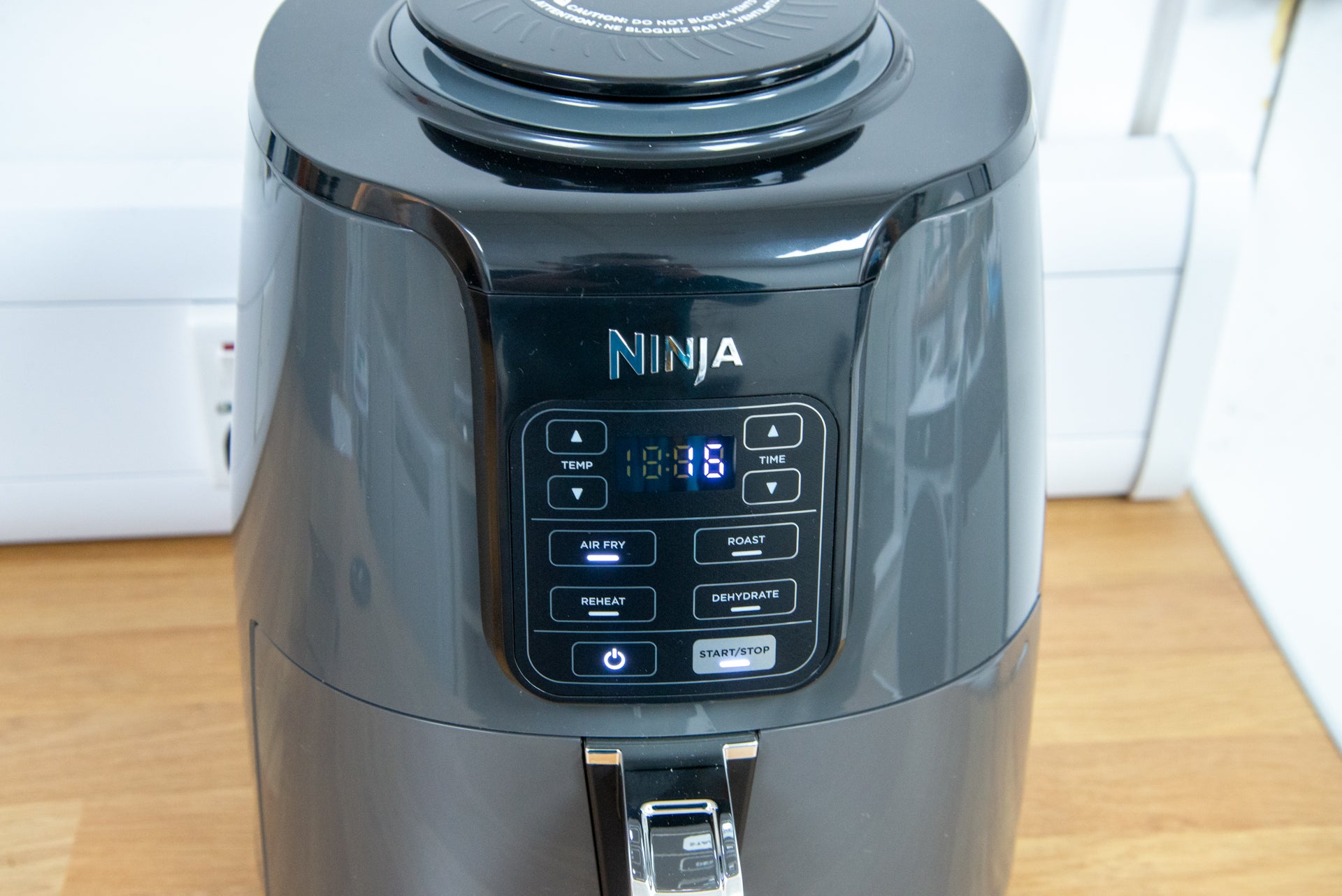
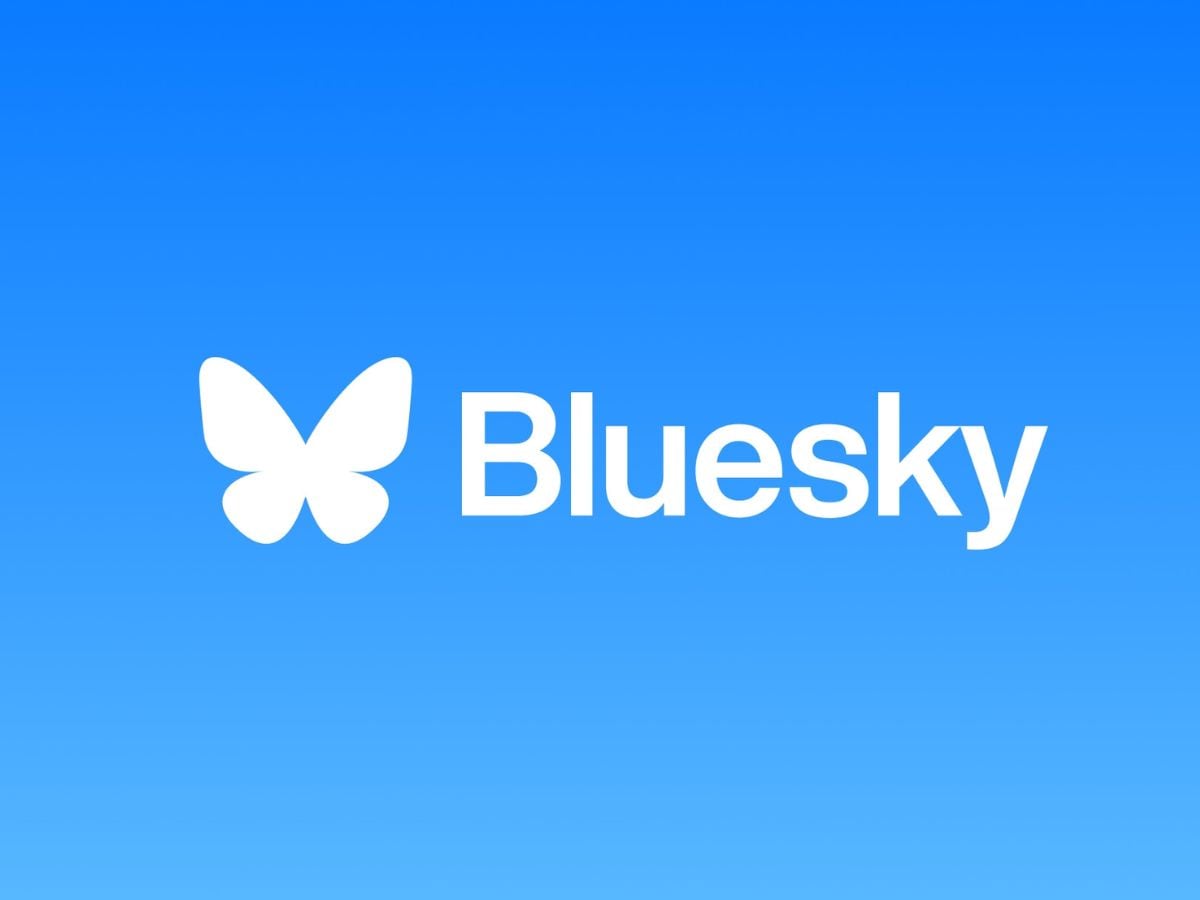

/cdn.vox-cdn.com/uploads/chorus_asset/file/24806200/236729_Garmin_Fenix_7S_Pro_AKrales_0127.jpg)


